65°F (18°C) to 70°F (21°C) is the perfect temperature range for cats, anything below that and they will begin to fill cold.
Cats are very good at regulating their body temperatures and can manage in temperatures as low as 35°F (2°C), temperatures lower than this are too cold for cats to be exposed to for longer than a few minutes.
Contents
Safe and unsafe temperatures for cats
Most vets agree that cats feel most comfortable in temperatures that aren’t under 42 degrees Fahrenheit.
However, that doesn’t mean that they can’t survive in colder environments.
They can and they will so long as the temperature doesn’t drop under 35 degrees Fahrenheit.
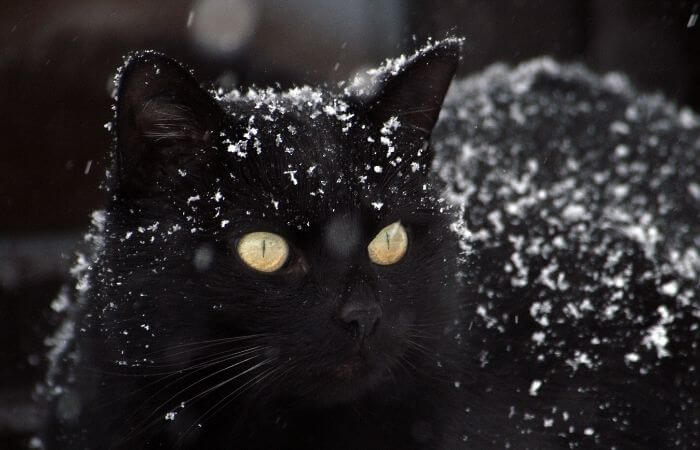
If it does, though, the cat’s health can be in danger.
Cats that are forced to live in freezing temperatures are susceptible to hypothermia and frostbite, but these two conditions can affect some cats more than they do others.
For example, geriatric cats and kittens have a much harder time regulating their body temperature compared to healthy adults.
That means very cold weather and the lack of access to a safe and warm space can be fatal for them.
How to tell if your cat is too cold
The normal body temperature of a cat should be around 99-102 degrees F.
Cats don’t become hypothermic as easily as one might think, especially if they live indoors.
Even so, if they do feel too cold and they have pre-existing health problems or they’re very young or old, they can develop complications.
Watch out for any of the following signs which may indicate that they’re feeling too cold:
- While some cats are merely comfortable sleeping with their paws tucked underneath their bodies, this can also be a sign that their living environment is chilly.
- Cats that feel too cold can also seek out body contact, whether with other cats or with people, or they can even shiver or feel cold to the touch.
- The body areas where cats tend to lose warmth are their ears and their paws so cold paws and ears can be a sign that they are cold. This happens because their body is trying to keep their vital organs warm.
If there is a heat source in the cat’s living environment, the animal will almost always go curl up into a ball right next to it.
Granted, this happens even when cats don’t feel too cold since they are known to love warmth even when the weather is scalding.
The right temperature for an indoor cat
70°F (21°C) is the perfect temperature for a cat that lives indoors.
In general, if you feel comfortable enough with a sweater on, your cat is probably feeling comfortable too.
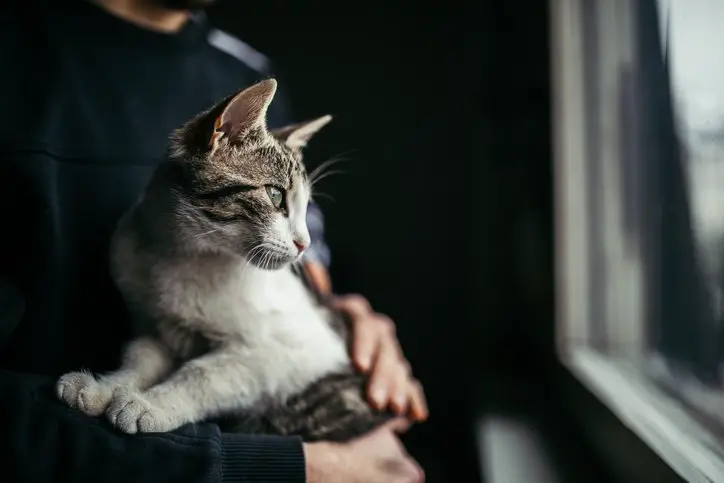
A cooler home is just as fine, so long as the cat has means to get warm by itself, such as hiding underneath the covers or snuggling next to her human or feline buddies.
In the winter, you might have to allow your feline friend to sleep next to you in bed, or at least elevate your cat’s bed so that it doesn’t touch the cold floor.
Hypothermia in cats
If a cat’s body temperature dips below the 90-degree mark, she could be at risk of developing hypothermia.
Hypothermia can be mild, moderate, or severe. A cat that is mildly hypothermic will shiver, feel weak, and be somewhat lethargic.
On the other hand, pets that have developed a moderate case of hypothermia will show additional clinical signs which can range from low blood pressure to slow breathing.
Most animals in this state are going to be unresponsive to any stimuli, and some might not even be able to move on their own. Some pets can experience muscle stiffness.
Severe hypothermia happens when the cat’s body temperature has reached alarming levels, such as under 82 degrees Fahrenheit.
Unfortunately, most animals that have developed severe hypothermia rarely recover, and some of the signs that pet guardians can notice, in this case, are dilated and fixed pupils, an inaudible heartbeat, and strained breathing.
Cat breeds that tolerate colder temperatures
There is a myth according to which cats are able to withstand harsh weather because they are equipped with fur.
The truth is that not all cats are as good when it comes to regulating their body temperature in the winter, especially when they live outdoors.

Some breeds can be particularly vulnerable to the cold, such as hairless ones like Sphynx, Bambino, Peterbald, or Elf cats.
Other breeds do relatively well when it’s cold outside, even around 45°F (7°C). Here are several examples:
- Norwegian Forest Cat
- Siberian
- Ragdoll
- Maine Coon
- Russian Blue
- Chartreux
- Scottish Fold
A cat’s coat type can impact the way she can withstand lower temperatures. Some cats have single coats, others are equipped with double coats, and there are breeds that have as many as three layers of fur.
Siberian cats are an example of a triple-coat breed. Double-coat breeds are best represented by Persians.
A single-coat cat such as the Turkish Angora will have a harder time regulating her body temperature, by comparison.
Factors that affect the way a cat adapts to low temperatures
We’ve already mentioned that the breed and type of coat play an important part when it comes to how cats can survive the cold, but there are other aspects that influence their ability to do so.
Young and geriatric cats generally need more heat.
Kittens can’t retain body heat as well as adults do.
A cat’s weight also has a say when it comes to how resilient they are to harsh weather.
Cats that are overweight have a better chance of maintaining body heat even when it gets too cold.
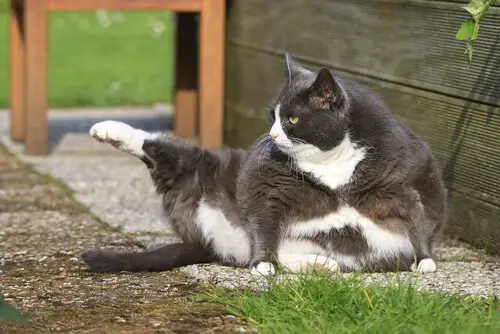
Additionally, animals that have a chronic illness or those that are recovering from surgery need to be kept in warm environments.
Otherwise, the recovery process is going to be longer and more complicated.
Keeping outdoor cats warm during the cold season
If your feline companion lives indoors all the time or only goes out of the house on occasion, you probably have little to nothing to worry about.
Cats will seek out warm places on their own.
For this reason, keeping the thermostat at around 65 to 70 degrees will ensure that your pet feels comfortable all the time.
Keeping outdoor cats warm is entirely different, though.
Unspayed and unneutered pets can go wandering about without minding whether it’s cold outside or not.
If you care for an outdoor cat, a good way to keep it safe and prevent frostbite and hypothermia would be to install an outdoor cat house or fit-out your shed to provide an additional warm spot for them to shelter in if they need to.
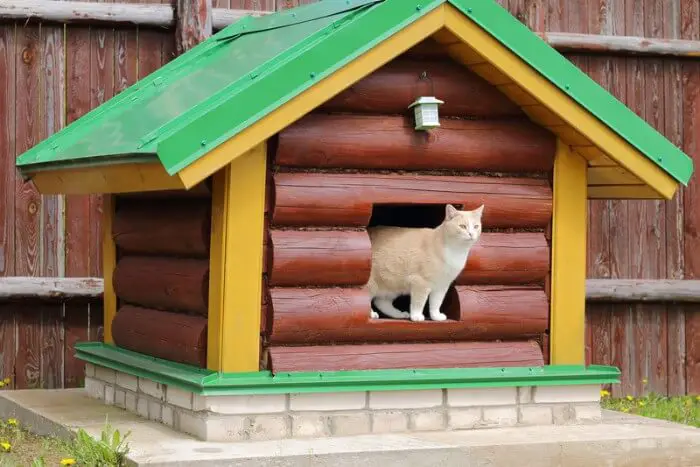
Even when it’s freezing, you can still keep the interior of the cat house warm by using heated cat bedding, for example.
There are plenty of online DIY projects for insulating a cat house if you don’t want to invest in heated blankets.
Plus, you can fill up several bottles with hot water in the evening and place them under several blankets so that they indirectly generate heat for the cats, at least for a number of hours.
Last, but not least, cats can have a harder time regulating their body temperature if they don’t get enough food.
Give your cats (whether indoor or outdoor) more high-quality cat food in the winter and gradually decrease the amount of kibble or canned food you give them as spring comes along.
As an Amazon Associate I may earn a small fee from qualifying purchases at no extra cost to you. This helps us run the site, so thanks for your support!

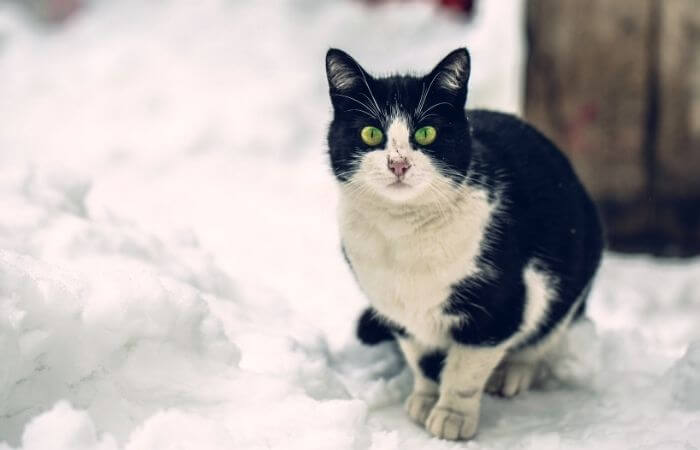
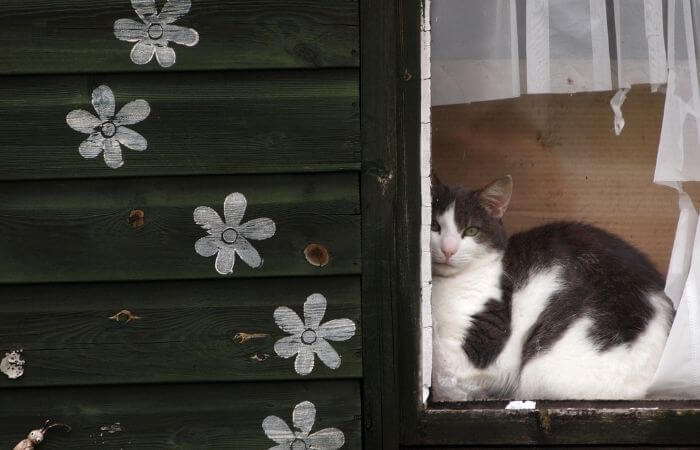
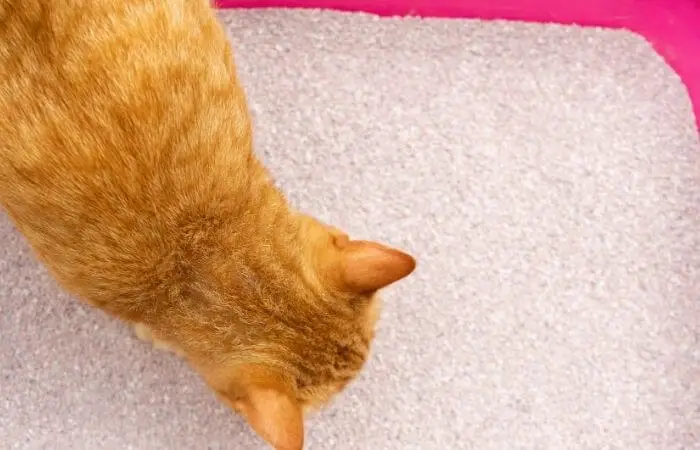


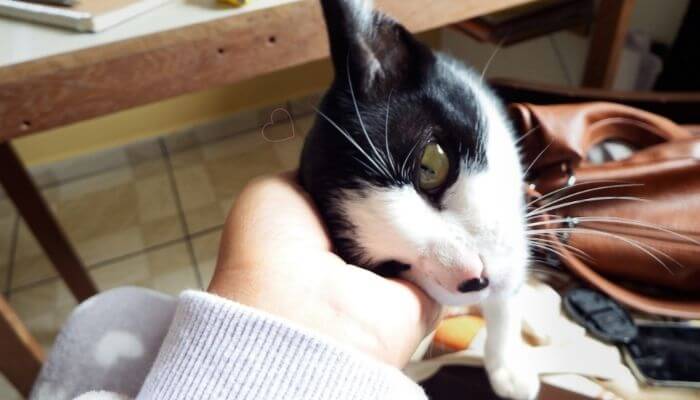
Leave a Comment